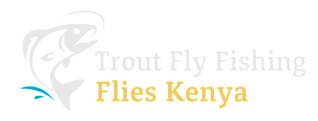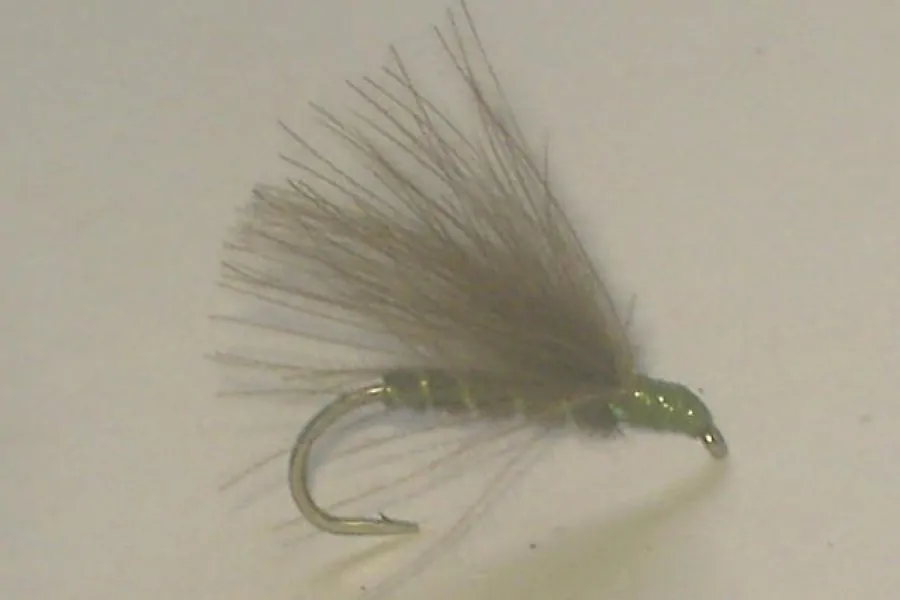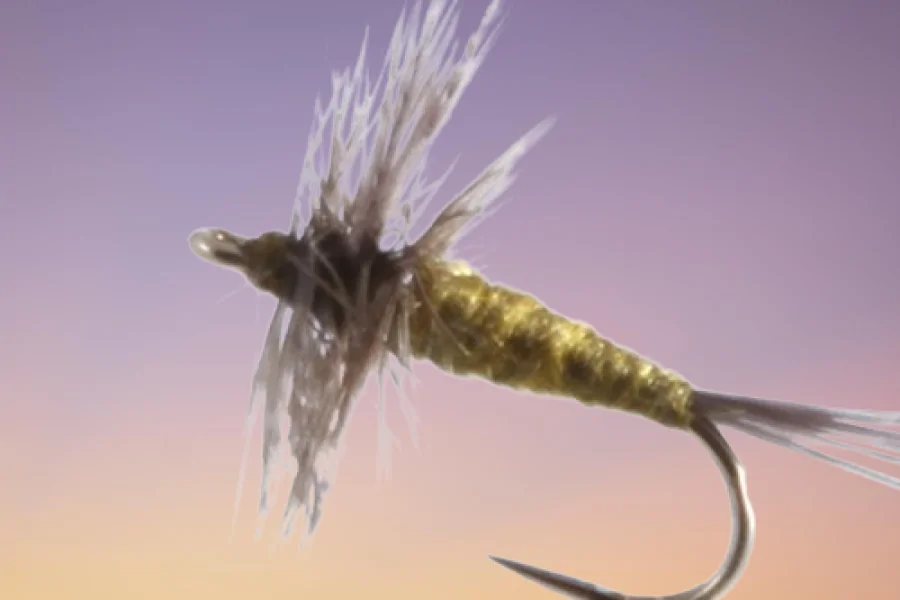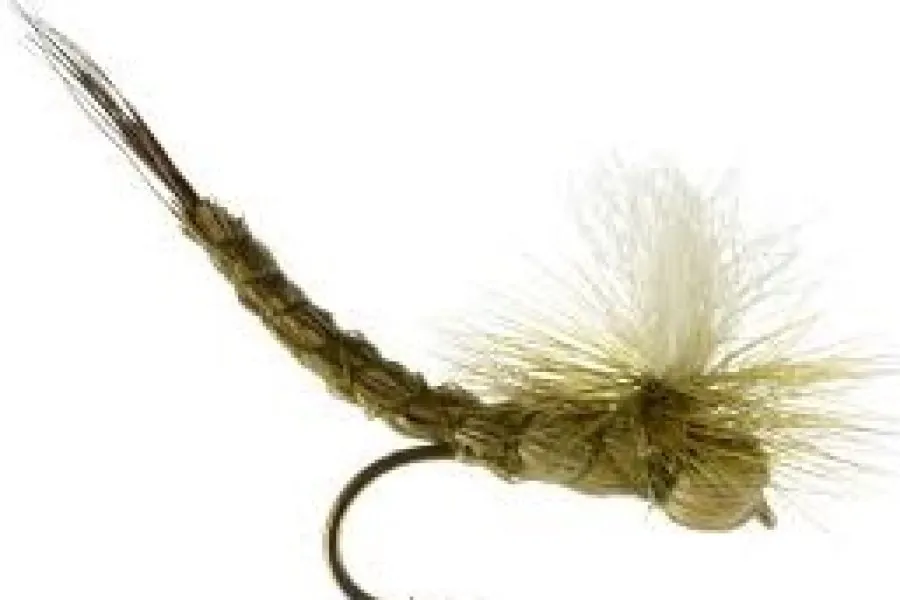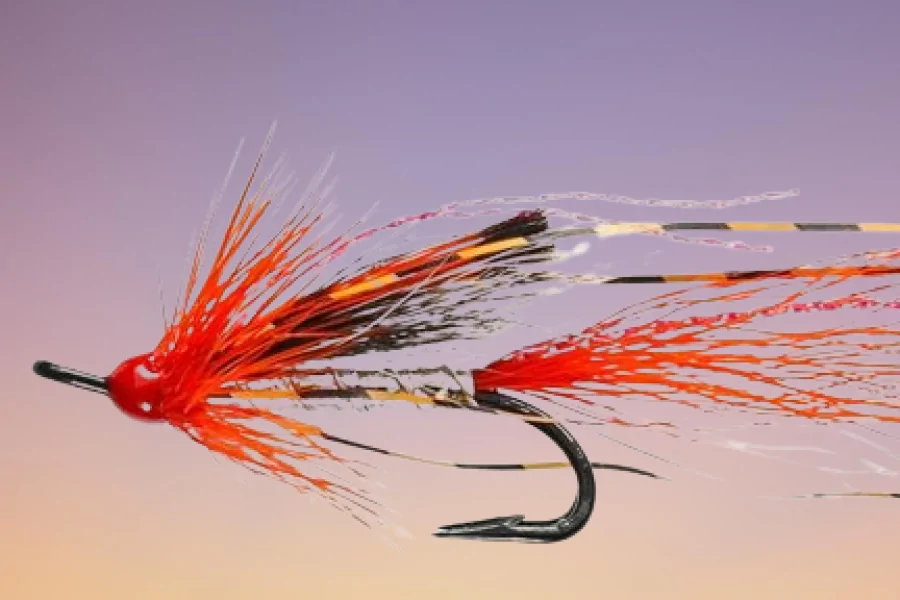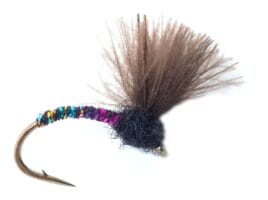Description
The CDC Midge Pupa represents the pinnacle of emerging midge imitation, combining the natural properties of CDC (Cul de Canard) feathers with precise midge pupae design. This specialized pattern accurately imitates the critical transition phase of midge pupae as they ascend through the water column. Developed through careful observation of natural midge emergence behavior, this pattern has proven particularly effective for targeting selective trout during midge hatches.
Design Philosophy and Material Innovation The pattern’s effectiveness stems from its carefully engineered components:
- Premium CDC feathers
- Quality thread body
- Precise segmentation
- Exact proportions
- Durable construction
- Natural buoyancy
- Strategic material placement
- Enhanced profile design
- Advanced tying techniques
- Natural movement properties
Technical Specifications
Hook Characteristics:
- Light curved pupa hook
- Available sizes: 18-24
- Fine wire construction
- Standard-eye design
- Chemically sharpened points
- Standard gape configuration
- Bronze finish
- Optimal hook strength
- Enhanced penetration design
- Perfect size-to-weight ratio
Material Properties:
- Selected CDC feathers
- Premium thread selection
- Natural materials
- Water-repellent properties
- Enhanced durability features
- Quality organic materials
- Specialized body materials
- Color-fast properties
- Buoyancy enhancement
- Movement characteristics
Construction and Tying Process The pattern’s success relies on precise construction methods:
- Balanced proportions
- Strategic CDC placement
- Graduated body tapering
- Reinforced thread base
- Material integration
- Enhanced durability features
- Proper material application
- Body segmentation
- Profile consistency
- Movement optimization
Fishing Applications and Techniques
Presentation Methods:
- Dead drift
- Slow lift
- Multiple drift speeds
- Depth control
- Pattern suspension
- Drag-free drifts
- Film penetration
- Structure targeting
- Cross-current drifts
- Action variation
Specialized Applications:
- Film zone
- Shallow riffles
- Technical water
- High-pressure situations
- Structure fishing
- Pocket water
- Bank fishing
- Seam fishing
- Drop-offs
- Current breaks
Seasonal Effectiveness
Winter Performance:
- Prime midge season
- Cold water periods
- Peak activity
- Limited feeding windows
- Slow presentations
- Temperature considerations
- Pattern visibility
- Fish holding patterns
- Oxygen levels
- Light penetration
Spring Applications:
- Early season hatches
- Warming waters
- Initial feeding
- Water level variations
- Mixed techniques
- Weather changes
- Pattern selection
- Temperature increases
- Fish movement
- Feeding windows
Summer Strategy:
- Morning/evening fishing
- Deep water refuges
- Temperature changes
- Feeding patterns
- Oxygen levels
- Light penetration
- Fish behavior
- Water conditions
- Current seams
- Structure targeting
Fall Tactics:
- Pre-winter feeding
- Cooling waters
- Changed light conditions
- Transitional periods
- Selective takes
- Pattern visibility
- Fish location
- Temperature drops
- Migration patterns
- Feeding windows
Habitat and Water Types
Water Applications:
- Spring creeks
- Tailwaters
- Mountain streams
- Lakes and ponds
- Clear pools
- Structure areas
- Current seams
- Drop-offs
- Holding water
- Pocket water
Specialized Environments:
- Crystal clear waters
- Stained conditions
- Shallow riffles
- Deep runs
- Complex currents
- Bank structure
- Channel edges
- Boulder gardens
- Undercut banks
- Current breaks
Target Species and Behavior
Primary Species:
- Brown Trout
- Rainbow Trout
- Brook Trout
- Cutthroat Trout
- Grayling
- Whitefish
- Selective Trout
- Technical Water Species
Feeding Behaviors:
- Film inspection
- Selective takes
- Pattern recognition
- Territorial behavior
- Opportunistic takes
- Selective feeding
- Strike triggers
- Visual stimulation
- Lateral line response
- Competitive feeding
Rigging Recommendations
Leader Setup:
- 12-15 foot leaders
- 6X-8X tippet
- Tapered leaders
- Fluorocarbon options
- Loop-to-loop connections
- Delicate presentation
- Proper stiffness
- Knot strength
- Breaking strain
- Abrasion resistance
Presentation Options:
- Single fly rigs
- Emerger/dry combos
- Multiple fly systems
- Traditional methods
- Modern techniques
- Line matching
- Leader design
- Tippet selection
- Depth control
- Film presentation
Professional Applications
Guide Usage:
- Client-friendly pattern
- Proven success rates
- Visibility advantages
- Easy presentation
- Multiple techniques
- Teaching tool
- Confidence pattern
- Versatile applications
- Durability
- Hook-up ratio
Competition Usage:
- Tournament proven
- Technical water success
- Pressure adaptation
- Quick-change capability
- Consistent performance
- Depth control
- Pattern rotation
- Size variation
- Color selection
- Presentation options
Care and Maintenance
Post-Fishing Care:
- Thorough drying
- CDC grooming
- Hook point inspection
- Material maintenance
- Thread preservation
- Storage preparation
- UV protection
- Pattern inspection
- Material maintenance
- Shape verification
Storage Requirements:
- Dry environment
- UV protection
- Separate compartments
- Regular inspection
- Moisture prevention
- Temperature control
- Light protection
- Ventilation needs
- Box organization
- Inventory management
Advanced Fishing Methods
Presentation Techniques:
- Film control
- Depth variation
- Strike detection
- Drift management
- Current reading
- Structure approach
- Pattern tracking
- Recovery methods
- Angle optimization
- Tension control
Water Reading:
- Current understanding
- Depth assessment
- Structure location
- Fish holding areas
- Presentation angles
- Feeding lanes
- Travel routes
- Rest areas
- Temperature breaks
- Current seams
Environmental Considerations
Conservation Features:
- Barbless options
- Sustainable materials
- Durable construction
- Catch-and-release friendly
- Minimal environmental impact
- Eco-conscious design
- Material selection
- Ethical considerations
- Resource protection
- Species conservation
Material Selection:
- Responsible sourcing
- Quality components
- Natural elements
- Ethical production
- Sustainable practices
- Environmental impact
- Material longevity
- Waste reduction
- Local materials
- Eco-conscious design
Additional information
| Hook size | 16, 18, 20, 22 |
|---|---|
| Hook type | Barbed Hooks, Barbless Hooks |
